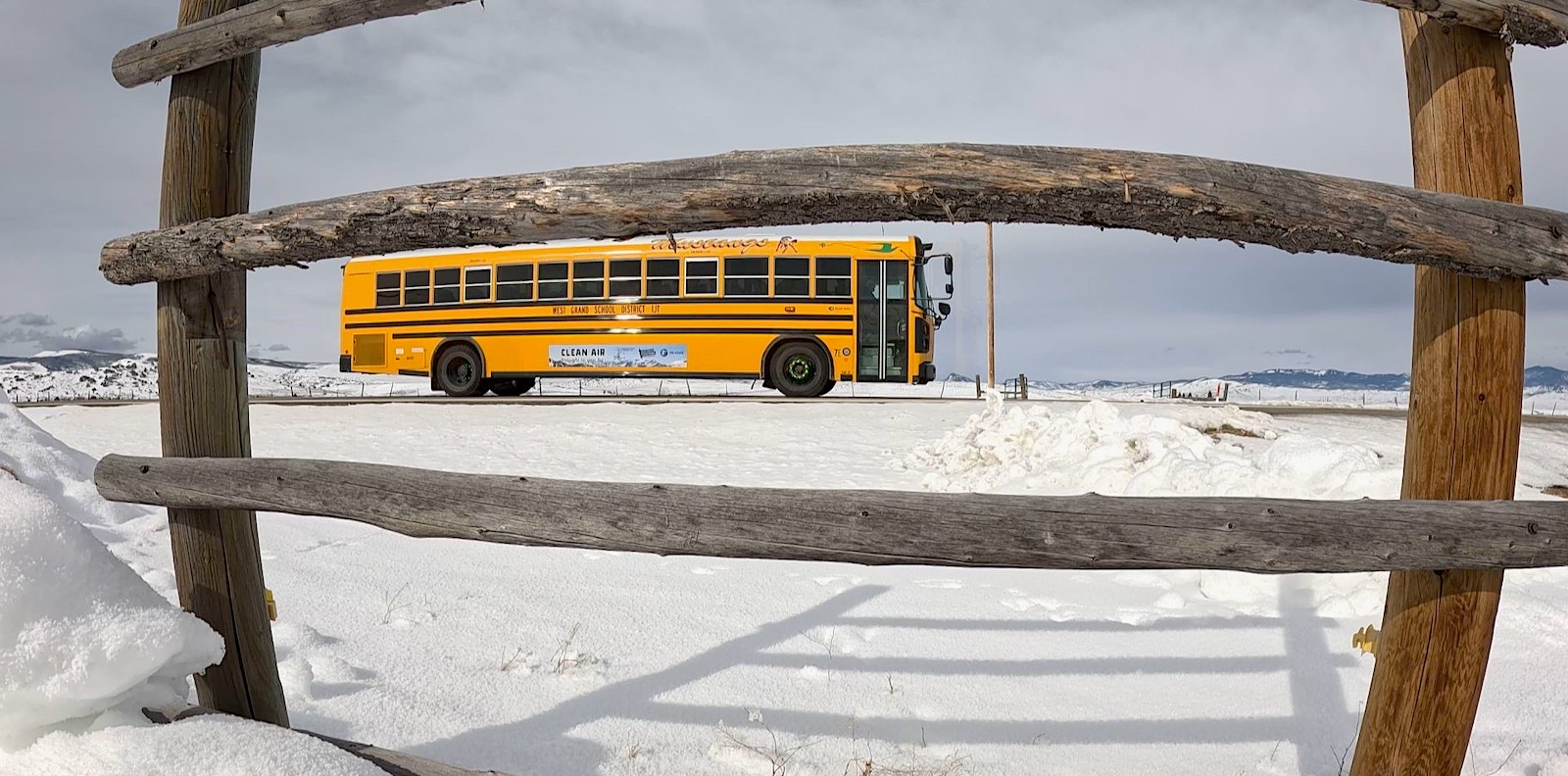
A lot of fuss was made this winter when some Tesla owners in Chicago experienced difficulty charging – but that wasn’t the experience for the majority of EV owners. In Colorado’s West Grand School District, electric school buses didn’t perform as well as their diesel counterparts. They performed better.
The town of Kremmling, Colorado is one of the coldest towns in the country, where high altitudes and northen winds combine to drive morning temperatures in the winter more than 30 degrees below zero. And it’s precisely in those super-cold temperatures that the school district’s electric school bus (which they’ve had since 2020) really shines.
“What we are seeing is that these buses are doing great in cold weather they still maintain a battery charge even when it’s cold,” said Environmental Protection Agency (EPA) representative, Casey Becker.
It’s little wonder that the Kremmling school district is pleased with the performance of its electric bus. Even though it’s true that EV experience reduced range in extreme weather conditions, gas and diesel vehicles do, too. And, in the case of diesel, the vehicles might not start at all in Colorado’s bitter winter cold.
Top comment by Augsburg
We are utilizing electric transit buses here in the Wood River Valley high up in the mountains of central Idaho (near the Sun Valley Ski Resort). Temps down to -20F every winter. Most winter days stay below 32F. Yes, garage storage of the buses with moderate climate control is most helpful to precondition the battery and passenger space. But that also reduces the maintenance to keep the buses and their windows free of snow and ice. Overall, a great experience that will continue to expand.
“Most of the winter it’s 30 to 35 below (zero),” offers West Grand County School District Director of Transportation, Bethany Aurinwhen. “When it’s up to 20 below that’s good day, and (the electric school bus) has performed extremely well.”
The local NBC affiliate 9News’ reporter, Matt Renoux, recently did a story on the success of the electric bus program, which I’ve included here.
Matt Renoux Electric Bus Report on 9News
The school district’s electric buses were paid for, in part, by grants from the EPA, along with the Colorado Department of Public Health and Environment (CDPHE). Becker adds that a total of 49 electric school buses will be heading to nine Colorado School Districts in the coming months, with two more earmarked for Kremmling.
Electrek’s Take
It’s almost universally true that school buses are prime candidates for electrification. They tend to operate on short, local routes, in stop-and-go traffic, and in close proximity with some of the most vulnerable populations in the country, in terms of respiratory illness and physical safety (just imagine a kid trying to yell “STOP!” at a bus driver and being heard over the din of noisy kids and a revving diesel). The fact that electric school buses can reduce a district’s operating costs and serve the public as a portable power center in an emergency are just icing on the electric cake.
FTC: We use income earning auto affiliate links. More.





Comments